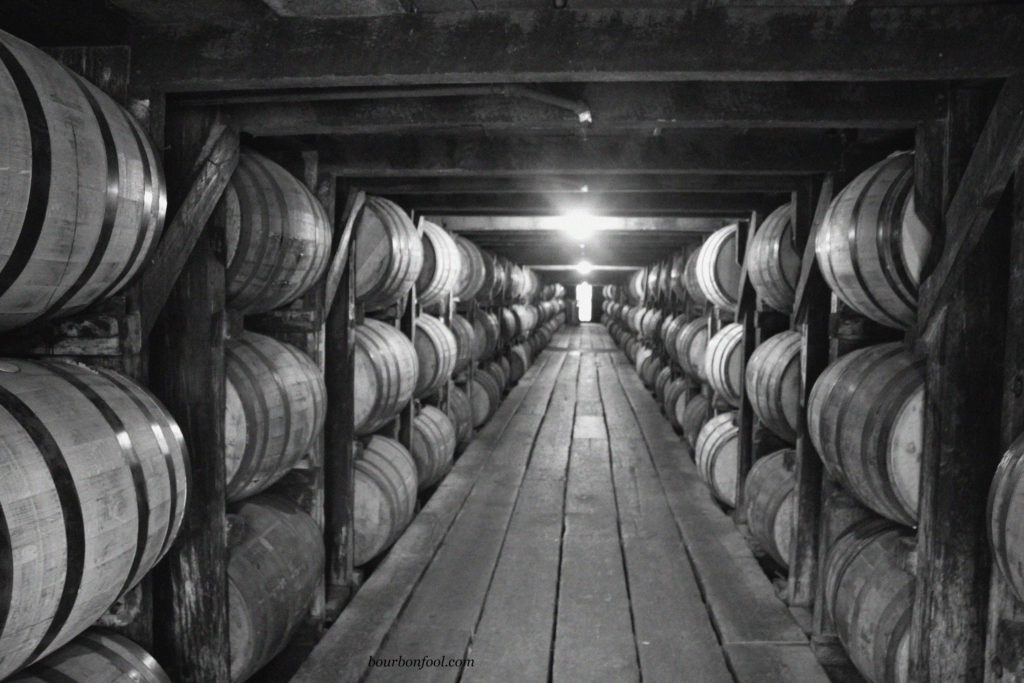During a recent bourbon tasting, a participant asked about the origin of the term rickhouse. I explained I was not sure, but specially constructed buildings known as rickhouses, rackhouses, or warehouses are in use to store and age bourbon.
One way of storing barrels was to stack them on top of one another. The weight applies pressure on the lower barrels that often resulted in leakage or failure of the bottom barrels.

Improved barrel storage
Frederick Stitzel was part of a distilling family when he patented an improved storage solution for storing barrels. His invention was revolutionary as it allowed the storage of barrels on their sides with support by timbers that did not stress the barrel staves. The other improvement was the ability to have good air circulation around the barrels. These ricks or racks allowed a distillery to store more barrels in a location because each rick held barrels independent of other ricks. This patent filing dates back to 1879.
I still could not determine where the origin of the term rickhouse originated. Finding the source was not as easy as I thought. The dictionary definition of rick is a stack of something in the open air or a pile of material such as wood.
The original patent filed by Mr. Stitzel refers to “racks for tiering barrels” with no mention of the word rick. I have heard many people use the term rackhouse. Many modern distillers use the term aging in warehouses. Barrel aging is where a lot of the magic happens by imparting flavor and color from the charred oak barrels. The barrel and the method of aging is a critical component of any bourbon. Storing barrels in rickhouses is common throughout Kentucky and many distilleries include visits to these amazing storage buildings. The aroma within a rickhouse is one of the great experiences on a bourbon distillery tour.
Specializing in building ricks
Buzick construction began doing work with distilleries in 1937 and has evolved into construction experts that specialize in building rackhouses. Interestingly, they refer to the structure as a rackhouse that contains barrel ricks. The rick is the structure that allows barrels to rest on their side. The Buzick company has patented a method for building barrel ricks and can produce as many as one hundred in a day. Their largest barrel storage buildings can hold 58,800 barrels of whiskey cradled in ricks. They are busy, and they have built rackhouses for many of the major distilleries including Beam, Makers Mark, Heaven Hill, Wild Turkey, Jack Daniels, Buffalo Trace, and Four Roses. They built Lux Row Distillery in Bardstown and rebuilt Woodford Reserve when it was rundown and in need of a facelift.
After much research, I was still no closer to determining the origin of the term rickhouse. I am comfortable that because of the barrel ricks, people in the distilleries began to refer to the buildings that housed them rickhouses. This old-time terminology became part of the language of the business and continues to this day. You can correctly refer to these prominent structures as warehouses. I like the historical use of the term rickhouse being part of bourbon lore. If you have not already visited a rickhouse in Kentucky, be sure to put it on your bucket list. They are engineering marvels coupled with a bourbon aroma you are sure to enjoy.
Another fine job…way to dig deep Bourbonfool!